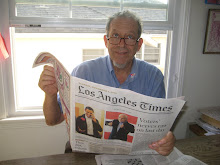HADASSAH
It seems in Shushan Jews were all renamin’
themselves, and changing Jewish names to Persian.
This may have been what really bothered Haman
when he found out about the brand new version
that Mordecai had given to the orphan
who had been called Hadassah when he took her
as daughter in his house, like an endorphin
relieving her from pain when fate forsook her,
for she had lost her mother and her father,
left all alone till she was given quarter
with Mordecai her cousin, who was rather
husband-like, though calling her his daughter.
He changed her name to Esther, which is Ishtar,
a goddess then in Shushan quite familiar;
all alternatives he might have wished are
forgotten, and may well have sounded sillier.
By giving her a goddess name he matched
his own, from Marduk, greatest god, derived;
both names from old divinities were snatched,
before in Esther’s scroll they were archived.
This yearning for the names of gentile gods
may well have greatly upset Haman who
cast purim––lots––with favorable odds
because he thought a Jew should stay a Jew,
not masquerading, acting like a goy.
Because he was defying Human Rights,
asserting Haman Rights instead, his ploy
did not succeed, when he fell from the heights
pursuing Esther, getting in a mess
harassing her, more sexually immodest.
He lost against the Jews a war like chess,
not only queened by Esther––even goddessed.
While Esther’s name may well be associated with the goddess Ishtar, Stephanie Dalley, in Esther’s Revenge at Susa: From Sennacherib to Ahasuerus (Oxford, 2007), suggests that links the orginial name of Esther, Hadassah , to the Akkadian hadaššatu, pointing out that that it is only found in a lexical (dictionary) text, as a synonym of kallatu, meaning a bride chosen by the father of the groom almost always referring to deities. She cites C. Wilcke, “Familiengründung in alten Babylonien,” in E. W. Müller, Geschichtsreif und Legimation zur Zeugung (Freiburg: Alber, 1985), 213-17, which gives the precise meaning of the word, Dalley adds (p. 169):
In the Hebrew book of Esther, the heroine is not selected for marriage by a prospective father-in-law.
Dalley may be mistaken. After stating that Mordecai had been exiled to Jerusalem with Jeconiah king of Judah, the text states:
And he was a nursing-parent of Hadassah, she was Esther, the daughter of his uncle, because she had no dather or mother. And the maiden was fair in appearance and good looking, and at the death of her father and mother, Mordecai לקחה, took her, as a daughter. (Est. 2:7)
לקח, take, is the verb the Bible uses to denote marriage. Est. 2:7 implies that Mordecai not only adopted Esther as a nursing-parent but married her as if she were his daughter. Why would the take want to imply that his marriage was like that of a father with his daughter? The answer may be because the text wishes to imply that when Mordecai took her as a wife, he was not the father of the groom but the adoptive father of the bride, making Esther like a hadaššatu, a bride chosen by the father of the groom.
2/25/10
Thursday, February 25, 2010
Subscribe to:
Post Comments (Atom)


No comments:
Post a Comment